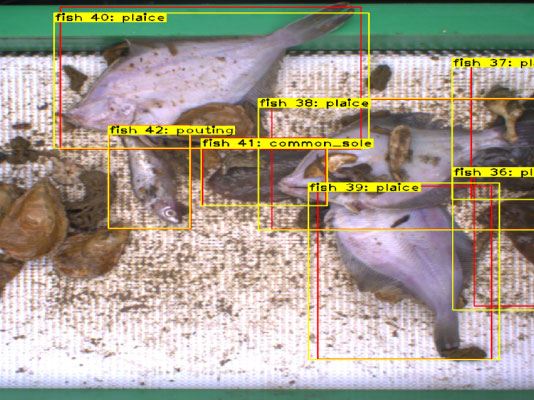
This is achieved through a powerful algorithm that recognises the species and size of fish, allowing the system to distinguish between catches for human consumption (above minimum size) and unwanted catches (below minimum size).
A video camera records fish moving along the conveyor belt from the deck to the sorting bay. An on-board AI unit decodes video images to distinguish between catches for human consumption, which are sent to the hold to be landed; and undersized catches, which are returned to the sea.
Over the past three years the project has targeted beam trawlers, which are important in Dutch fisheries. Many fishers signed up to take part in the tests. Participation was voluntary, although the fishers received compensation for the extra work involved. The system was installed onboard vessels, allowing the fishers to quickly see if they are catching too many undersized fish or the wrong species, and move to another fishing ground.
- Project locations
- Netherlands
- Overall budget
- €5 458 991
- EU contribution
- €4 094 24375% of the overall budget
- Project website
- Fully Documented Fisheries
Results
- The project helps improve the processing and registration of catches on board, reducing the workload of the crew and administrative burden.
- This monitoring system helps to meet registration obligations, adding more transparency to the sector and increasing sustainability.
- Because no direct deployment of extra personnel is required on board, this system can be used to monitor a large part of the fleet in a cost-efficient manner.
- After promising results in the first pilot phase, the team decided to expand the project to other fleet segments, as well as other countries (mainly Denmark and Belgium).
Contact
Edwin van Helmond
- Name
- Edwin van Helmond
- Organisation
- Wageningen University and Research (WUR)
- Phone number
- +31 317487171
